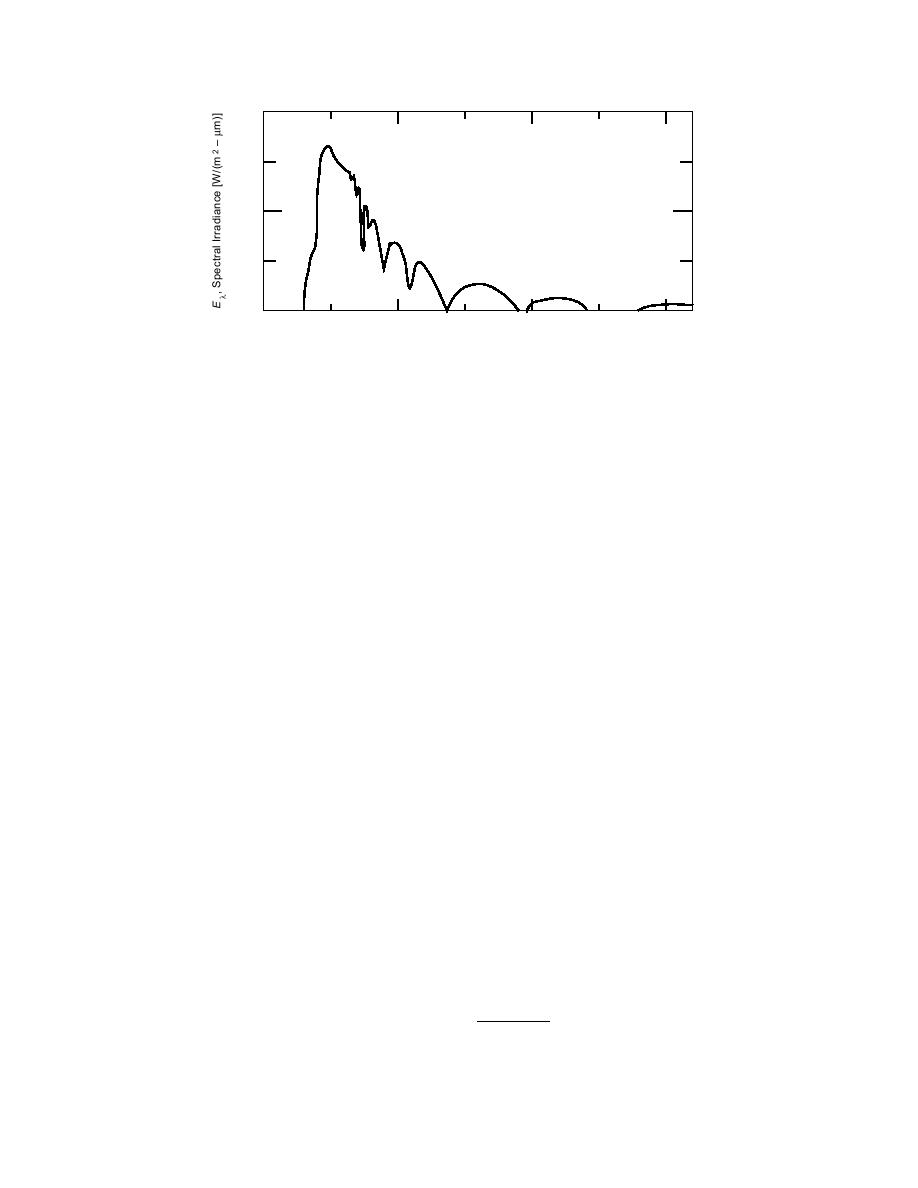
2000
1000
0
1
2
3
λ, Wavelength (m)
Figure 6. Solar spectral irradiance at the earth's surface (from Swain and Davis 1978).
and green) and reflects about 15% of the radiation
pected solar radiation (computed from the time
it receives. Hay, bark and brown leaves have a low
of day, latitude, and Julian day) using hourly cloud
reflectance through most of the visible region but
cover data and the procedure outlined in Appen-
have higher reflectance in the infrared than coal
dix A.
or gravel. The high reflectance of the plant mate-
We also documented the areal coverage (frac-
rials in the infrared is due to the plants' cell struc-
tion of the ice covered by the leaves) by photo-
ture (Hoffer 1978). We note that the wavelengths
graphing the dusted area and then using an im-
at which dead leaves absorb the most radiation
age analysis program to determine the relative
(400700 nm) are those where snow is the most
fractions of the snow and leaves. The process is
reflective (Fig. 5) and also those wavelengths cor-
illustrated in Figure 7. Figure 7a is a photograph
responding to the sun's peak radiation (Fig. 6).
of the dusted ice surface and Figure 7b is the same
Consequently, we found that leaves could be used
photograph converted to a binary image. The ar-
to effectively lower the albedo of snow, and would
eal coverage was then estimated using a computer
likely be an effective dusting material.
program that determines the area covered by black
(the leaves and stems) in relation to the total area*.
In this example, 30% of the area was covered by
leaves and stems.
FIELD TESTS OF LEAF MULCH
The leaves used for this study were mulched
Having determined from the tests on the pond
by the Town of Montpelier. The objective in mulch-
that leaves might be an effective alternative to
ing the leaves was to reduce the leaves to mulched
dusting with coal dust, slag or sand, we conducted
particles that were approximately the size of a
two field trials during the spring of 1994. The pur-
postage stamp. Mulched to this size, about four
pose of these trials was to test using a hydroseeder
bags of leaves yield one bag of leaf mulch.
to apply biodegradable dusting materials to river
The hydroseeder used for this operation was a
ice. Additionally we measured the depth of the
Bowie model 2500 hydroseeder. We found that 18
snow and ice in the test reaches during the test to
to 20 fifty-gallon bags of leaf mulch added to the
further document the performance of the leaves
2,500 gal. (9,500 L) of water produced a slurry that
as a dusting material. The field trials were con-
could be easily sprayed. By volume that is roughly
2.7 m3 of leaf mulch. By weight it was an estimated
ducted on the Winooski River in Montpelier, Ver-
mont, and on the White River in Hartford, Ver-
540 kg of leaf mulch.
mont. The sites were chosen because they are lo-
cations where ice jams have frequently formed in
Montpelier, Vermont
The Winooski River has repeatedly had ice jams
the past, resulting in flooding and damages.
In addition to measuring ice thickness, snow
depths, and air temperature during the melt pe-
*The value for the aerial coverage depends on how the
riod, we estimated the incident solar radiation.
analyst classifies the gray areas when creating the bi-
Estimates were obtained by decreasing the ex-
nary image from the black-and-white photograph.
6



 Previous Page
Previous Page
